Resistant starch is a unique carbohydrate that acts like dietary fiber, resisting digestion and serving as a prebiotic to support gut health and overall well-being naturally.
Definition and Role of Resistant Starch
Resistant starch is a type of carbohydrate that resists digestion in the small intestine, functioning similarly to dietary fiber. It serves as a prebiotic, nourishing beneficial gut bacteria and promoting a healthy microbiome. This unique property allows it to ferment in the large intestine, producing short-chain fatty acids like butyrate, which support colon health and enhance nutrient absorption. Resistant starch plays a crucial role in improving gut health, regulating blood sugar levels, and aiding in weight management. It is naturally present in various foods and can also be obtained through supplements, making it a versatile and beneficial component of a balanced diet.
Resistant Starch as a Prebiotic
Resistant starch acts as a powerful prebiotic, providing sustenance to beneficial gut bacteria, which ferment it into short-chain fatty acids like butyrate. This process enhances gut health, strengthens the intestinal lining, and improves immune function. By promoting a balanced microbiome, resistant starch supports digestion, reduces inflammation, and may alleviate symptoms of conditions like IBS. Its prebiotic properties also contribute to better nutrient absorption and overall well-being, making it a vital component for maintaining a healthy digestive system and fostering a positive gut environment.

Types of Resistant Starch
Resistant starch is classified into four types, each with unique properties. Types 1-3 occur naturally, while Type 4 is chemically modified to enhance resistance.
Type 1: Physically Inaccessible Starch
Type 1 resistant starch is naturally occurring and found in whole grains, seeds, and legumes. It remains undigested because it is physically protected by cell walls, preventing enzymes from accessing the starch. This type is abundant in foods like barley, oats, and certain legumes. Unlike other types, Type 1 starch does not require cooking or cooling to remain resistant. It is a natural, unaltered form of resistant starch, making it a valuable component of a healthy, balanced diet. Its physical inaccessibility ensures it reaches the colon intact, where it acts as a prebiotic.
Type 2: Native Resistant Starch
Type 2 resistant starch is found in its natural, unprocessed state within certain starchy foods like raw potatoes, green bananas, and plantains. Unlike Type 1, it is not protected by cell walls but is resistant due to its granular structure. Cooking typically breaks down Type 2 starch, making it digestible. However, when consumed raw, it remains resistant and ferments in the gut, promoting beneficial bacteria and supporting digestive health. This type is ideal for those seeking to boost prebiotic intake through whole, uncooked foods, offering a natural way to enhance gut function and overall well-being.
Type 3: Retrograded Starch
Type 3 resistant starch is formed when cooked starches, such as potatoes, rice, or pasta, are cooled. This process allows the starch molecules to recrystallize, creating a structure resistant to digestion. Retrograded starch is not naturally occurring but can be easily incorporated into the diet through cooled, cooked foods like potato salad or chilled rice dishes. Reheating these foods can reverse some of their resistant properties, but a portion remains resistant. This type of starch acts as a prebiotic, fostering gut health by feeding beneficial bacteria and promoting the production of short-chain fatty acids. It’s a practical way to boost dietary fiber intake.
Type 4: Chemically Modified Starch
Type 4 resistant starch is synthesized through chemical processes like cross-linking, esterification, or etherification. These modifications make the starch resistant to digestion by enzymes in the gut. Unlike other types, RS4 is not found naturally in foods but is commonly used in processed products. It enhances food texture and shelf life while providing prebiotic benefits. RS4 supplements are popular for those seeking higher resistant starch intake without dietary changes. This manufactured starch supports gut health by promoting beneficial bacteria and producing short-chain fatty acids, offering a convenient option for improving digestive well-being and overall health.
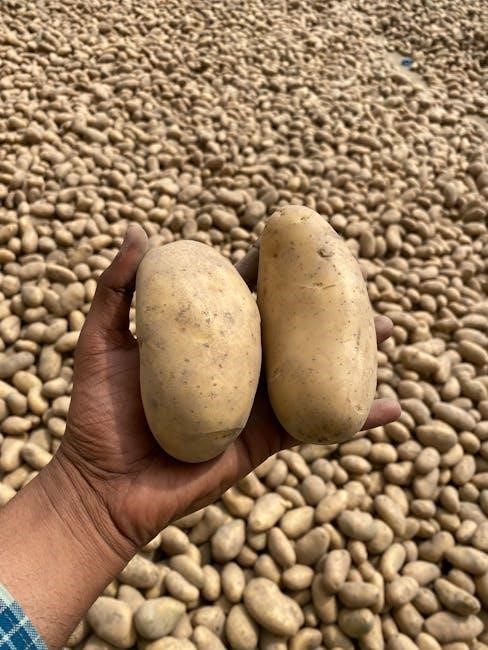
Health Benefits of Resistant Starch
Resistant starch offers numerous health benefits, acting as a prebiotic to improve gut health and digestion. It helps regulate blood sugar levels, supports weight management, and enhances immune function. Incorporating resistant starch-rich foods can promote overall well-being and long-term health benefits.
Improved Gut Health
Resistant starch significantly enhances gut health by acting as a prebiotic, promoting the growth of beneficial gut bacteria. It ferments in the large intestine, producing short-chain fatty acids like butyrate, which nourish colon cells, reduce inflammation, and strengthen the gut barrier. This process supports a balanced microbiome, improving digestion and reducing symptoms of gastrointestinal disorders. Regular consumption of resistant starch-rich foods can lead to a healthier digestive system and enhanced overall well-being. Incorporating these foods into your diet is a natural way to support gut health and maintain a strong immune system.
Blood Sugar Control
Resistant starch helps regulate blood sugar levels by slowing down glucose absorption in the small intestine. This reduces the spike in blood sugar after meals, making it beneficial for managing insulin sensitivity. Foods rich in resistant starch, such as cooked and cooled potatoes or rice, promote a gradual release of glucose, which helps maintain stable blood sugar levels. Regular consumption can improve insulin function and reduce the risk of developing type 2 diabetes. This makes resistant starch an excellent dietary choice for those seeking to manage or prevent blood sugar-related health issues naturally.

Weight Management
Resistant starch plays a significant role in weight management by promoting satiety and reducing overall calorie intake. It slows digestion, keeping you feeling fuller longer and preventing overeating. Additionally, resistant starch influences gut hormones, increasing leptin (which suppresses appetite) and decreasing ghrelin (which stimulates hunger). It also enhances fat oxidation and boosts metabolism, helping the body burn more calories. Foods high in resistant starch, such as green bananas and cooked, cooled potatoes, support these effects. By improving metabolic efficiency and appetite regulation, resistant starch can be a valuable component of a weight management diet.
Immune System Support
Resistant starch supports immune function by fostering a healthy gut microbiome. It acts as a prebiotic, feeding beneficial bacteria and promoting the production of short-chain fatty acids, such as butyrate. These compounds strengthen the gut barrier, preventing harmful pathogens from entering the bloodstream. A robust gut lining is essential for immune defense, as it reduces inflammation and inhibits the growth of harmful bacteria. By enhancing gut health, resistant starch indirectly boosts the immune system, reducing the risk of infections and promoting overall well-being. Incorporating resistant starch-rich foods, like green bananas and potatoes, can enhance immune resilience naturally.
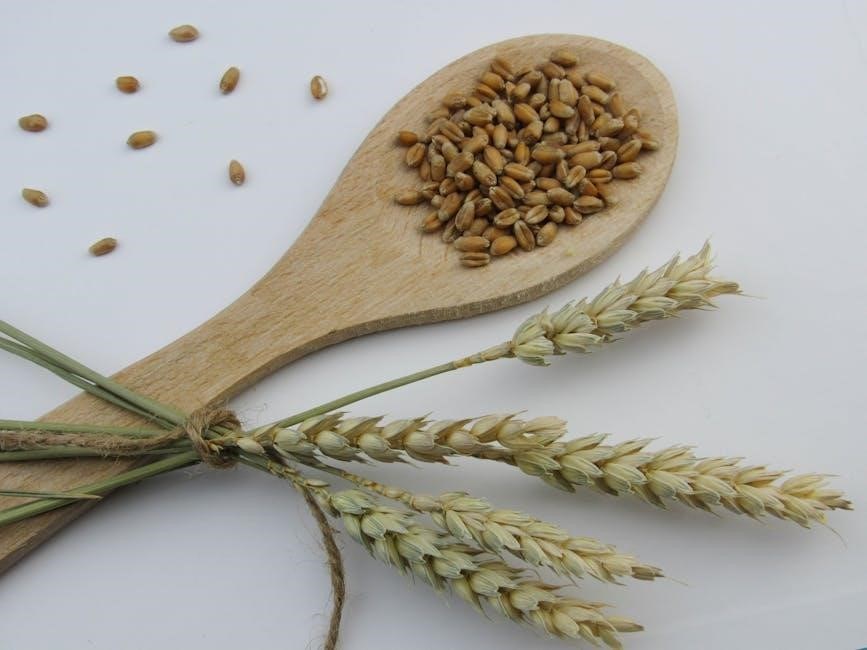
Resistant Starch Foods List
Discover a comprehensive guide to resistant starch-rich foods, including potatoes, rice, oats, green bananas, and legumes. Download the free PDF for easy reference and meal planning.
High-Starch Foods
High-starch foods are excellent sources of resistant starch, offering numerous health benefits. Potatoes, especially when cooked and cooled, are rich in resistant starch, as are rice and oats. These foods, when prepared correctly, provide prebiotic properties that support gut health. Incorporating high-starch foods like potato salad or rice dishes into your diet can boost fiber intake and improve digestion. Green bananas and plantains are also high in resistant starch, making them great additions to a balanced meal. These foods are versatile and can be easily integrated into various recipes for a nutritious diet.
Whole Grains
Whole grains are a rich source of resistant starch, offering a natural way to enhance your diet with prebiotic benefits. Grains like oats, barley, and quinoa contain significant amounts of resistant starch, particularly when cooked and cooled. This process increases the formation of retrograded starch, which resists digestion and supports gut health. Incorporating whole grains into meals can boost fiber intake and promote a balanced digestive system. They are also versatile, making them easy to add to salads, side dishes, or breakfast recipes. Whole grains are a nutritious and flavorful way to increase your resistant starch consumption naturally.

Legumes
Legumes are among the top sources of resistant starch, making them a valuable addition to a balanced diet. Foods like lentils, chickpeas, and black beans contain high amounts of resistant starch, particularly when cooked and cooled. This process enhances the formation of retrograded starch, which resists digestion and acts as a prebiotic. Legumes also provide fiber, protein, and essential nutrients, supporting gut health and overall well-being. However, they are high in FODMAPs, which may require mindful portioning for those with digestive sensitivities. Incorporating legumes into meals can significantly boost resistant starch intake and promote a healthy digestive system naturally.
Fruits High in Resistant Starch
Certain fruits are rich in resistant starch, particularly when consumed in their unripe or green state. Green bananas, for instance, contain a high amount of resistant starch due to their unripe state, making them an excellent choice. Similarly, plantains and some varieties of underripe mangoes also contribute to resistant starch intake. These fruits provide a natural source of prebiotic fiber, supporting gut health and promoting the growth of beneficial bacteria. Incorporating these fruits into your diet can enhance digestive health and offer additional nutritional benefits, making them a great addition to a balanced meal plan.
Cooking Methods to Increase Resistant Starch
Cooking methods can significantly enhance resistant starch content in foods. Potatoes, rice, and pasta develop more resistant starch when cooked and then cooled. This process, known as retrogradation, reorganizes the starch molecules into a crystalline structure that resists digestion. Chilling these cooked starches in the refrigerator for at least 24 hours maximizes their resistant starch content. Reheating them later will partially break down the starch, but some resistance remains. These simple techniques allow you to boost the nutritional value of common dishes, making them richer in prebiotic fiber and more beneficial for gut health. This method is easy to incorporate into daily meal preparation.
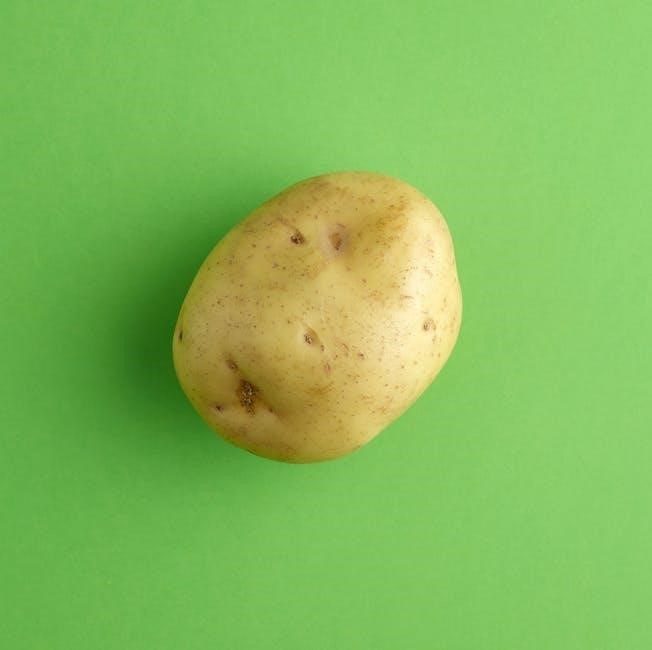
Resistant Starch-Rich Food Categories
Resistant starch is abundant in cooked and cooled starches, whole grains, underripe fruits, and legumes. These categories provide natural sources of this beneficial prebiotic, enhancing gut health.
Cooked and Cooled Starches
Cooked and cooled starches, such as potatoes, rice, and pasta, are rich in resistant starch. When starches are cooked, they absorb water and swell, but upon cooling, they form a crystalline structure that resists digestion. This process, known as retrogradation, enhances the starch’s resistance to digestive enzymes. Reheating these starches can partially break down the resistant starch, but a significant portion remains intact. Incorporating cooled, cooked starches into meals, such as potato salad or chilled rice dishes, is an effective way to boost resistant starch intake and support gut health. This method is simple and highly beneficial.
Whole Grain Products
Whole grain products are excellent sources of resistant starch, particularly due to their intact cell structures. Grains like barley, oats, and rye contain Type 1 resistant starch, which is protected by cell walls and escapes digestion. Whole grain bread, cereals, and pasta retain more resistant starch compared to refined versions. Incorporating whole grains into meals not only increases resistant starch intake but also provides essential nutrients and fiber, promoting a balanced diet and supporting gut health. This makes whole grain products a nutritious and practical choice for boosting resistant starch consumption naturally.
Underripe Fruits
Underripe fruits, such as green bananas and plantains, are rich in resistant starch. As fruits ripen, their starches naturally convert to sugars, reducing resistant starch content. Green bananas, in particular, are among the highest natural sources of resistant starch, making them a popular choice for those seeking to boost their intake. Other underripe fruits, like unripe mangoes and papayas, also contribute significantly. These fruits provide a delicious and natural way to incorporate resistant starch into the diet, supporting gut health and offering prebiotic benefits. They are ideal for those looking to enhance digestive well-being through whole foods.
Legume Varieties
Legumes, including beans, lentils, and chickpeas, are excellent sources of resistant starch. They contain both type 1 and type 2 resistant starch, making them a nutritious addition to meals. Legumes are also high in fiber and protein, supporting gut health and satiety. However, they are often high in FODMAPs, which can be challenging for those with digestive sensitivities. Cooking methods and portion control can help manage this. Incorporating legume varieties into your diet is a great way to naturally increase resistant starch intake while benefiting from their overall nutritional profile. They are versatile and can be easily added to soups, salads, and main dishes.
Resistant Starch in Common Foods
Resistant starch is found in everyday foods like potatoes, rice, oats, and green bananas. Cooking and cooling these foods increases their resistant starch content, enhancing their nutritional benefits naturally.
Potatoes
Potatoes are an excellent source of resistant starch, particularly when cooked and cooled. This process, known as retrogradation, creates crystalline structures that resist digestion. Cooked and cooled potatoes contain higher levels of resistant starch, making them a prebiotic-rich food. Reheating does not fully revert the starch back to its original form, so they retain some resistant starch benefits. Incorporating potatoes into dishes like potato salad or chilled sides can enhance your dietary intake of this beneficial compound. Potatoes are a versatile and natural way to boost gut health and support overall well-being.
Rice
Rice is a significant source of resistant starch, especially when prepared and consumed in specific ways. Cooked and cooled rice contains retrograded starch, which forms crystalline structures resistant to digestion. This makes it a valuable prebiotic, supporting gut health by feeding beneficial bacteria. Reheating rice partially breaks down these structures, but a portion of the resistant starch remains. Incorporating rice into meals like salads or side dishes after cooling can enhance your intake. Rice is a versatile and natural way to include resistant starch in your diet, promoting digestive well-being and overall health.
Oats
Oats are a rich source of resistant starch, particularly Type 1, which remains physically inaccessible due to their fibrous cell walls. As a whole grain, oats naturally contain resistant starch, making them a nutritious addition to your diet. They are high in dietary fiber and act as a prebiotic, promoting gut health by feeding beneficial bacteria. Oats can be enjoyed as oatmeal, muesli, or added to baked goods. Their resistant starch content remains relatively intact even after processing, making them a reliable source of this beneficial carbohydrate. Incorporating oats into your meals supports digestive well-being and overall health.
Green Bananas
Green bananas are one of the highest natural sources of resistant starch, particularly Type 2, which remains undigested in the small intestine. As bananas ripen, much of this resistant starch converts to regular starch. Green bananas are ideal for gut health, as they feed beneficial bacteria, promoting a healthy gut microbiome. They also help regulate blood sugar levels and support satiety. Incorporating green bananas into your diet, such as in smoothies or salads, is a great way to boost your resistant starch intake and enjoy its prebiotic benefits. This makes them a valuable addition to a balanced diet.
Plantains
Plantains are a rich source of resistant starch, particularly Type 2, making them a valuable addition to a diet focused on improving gut health. Unlike ripe bananas, unripe plantains contain high amounts of resistant starch, which remains undigested in the small intestine and ferments in the large intestine. This process supports the growth of beneficial gut bacteria and enhances the production of short-chain fatty acids, such as butyrate, which promotes colon health. Plantains are also versatile, as they can be cooked in various ways, including boiling, baking, or frying, making them a convenient and nutritious option for incorporating resistant starch into meals.
Resistant Starch Supplements
Resistant starch supplements, like RS4, offer convenient ways to boost intake, supporting gut health and digestion without relying on food sources alone, enhancing overall well-being naturally.
RS4 Supplements
RS4 supplements are chemically modified resistant starches, not naturally found in foods, offering enhanced stability and resistance to digestion. They are manufactured through processes like cross-linking, esterification, and etherification, making them highly stable during cooking and digestion. RS4 supplements are popular for their ability to withstand high temperatures and retain their resistant properties, providing consistent prebiotic benefits. They are often used to support gut health, improve blood sugar control, and enhance overall digestive well-being. Unlike natural resistant starch, RS4 remains unaffected by reheating, making it a reliable choice for those seeking steady resistant starch intake.
Natural vs. Manufactured Resistant Starch
Natural resistant starch is found in whole foods like potatoes, rice, oats, and green bananas, while manufactured resistant starch, such as RS4, is chemically altered for enhanced stability. Natural resistant starch forms through processes like cooking and cooling, offering varying levels of resistance. Manufactured versions, however, are designed to resist digestion under all conditions, providing consistent prebiotic benefits. While natural sources are cost-effective and readily available, manufactured options offer controlled and predictable resistant starch intake, catering to specific dietary needs and preferences. Both types support gut health but differ in accessibility and functionality;
Resistant starch promotes gut health by acting as a prebiotic, feeding beneficial bacteria and boosting short-chain fatty acid production, enhancing digestion and overall well-being naturally. Resistant starch acts as a prebiotic, feeding beneficial gut bacteria and promoting a balanced microbiome. During fermentation, it produces short-chain fatty acids, such as butyrate, which energize colon cells, reduce inflammation, and enhance gut barrier function. This process supports the growth of beneficial bacteria like Bifidobacteria and Lactobacilli, improving overall digestive health. The increased production of butyrate also helps regulate gut pH, suppress harmful pathogens, and improve mineral absorption. By fostering a healthy gut environment, resistant starch plays a crucial role in maintaining immune function and overall well-being, making it a valuable dietary component for gut health. Resistant starch is fermented by gut bacteria, producing short-chain fatty acids (SCFAs) like acetate, propionate, and butyrate. These molecules are vital for colon health, improving gut barrier function and reducing inflammation. Butyrate, in particular, serves as a primary energy source for colon cells, promoting a healthy gut environment. SCFAs also regulate gut pH, suppress harmful bacteria, and enhance mineral absorption. By stimulating SCFA production, resistant starch supports a balanced microbiome, which is linked to improved immune function, digestion, and overall well-being; Incorporating resistant starch-rich foods into your diet can significantly boost SCFA production and gut health benefits. Butyrate, a short-chain fatty acid produced from resistant starch fermentation, is a key player in gut health. It serves as the primary energy source for colon cells, promoting a strong gut barrier and reducing inflammation. Butyrate also has anti-inflammatory properties, protecting against conditions like irritable bowel syndrome and inflammatory bowel disease. Additionally, it supports immune function by enhancing the production of antibodies and activating immune cells. Elevated butyrate levels are associated with improved mental health, reduced oxidative stress, and even anti-cancer properties. Incorporating resistant starch-rich foods boosts butyrate production, offering numerous health benefits for the gut and beyond. Resistant starch-rich foods, like legumes, often contain FODMAPs, which can be challenging for those with digestive sensitivities or conditions like IBS. Balancing intake is key. Legumes, such as beans and lentils, are rich in resistant starch but also contain high levels of FODMAPs, particularly galacto-oligosaccharides. This makes them difficult for some to digest, especially those with IBS or SIBO. While resistant starch offers gut health benefits, the FODMAP content can trigger symptoms like bloating and gas. Managing portion sizes and cooking methods can help reduce FODMAP levels, making legumes more accessible while still providing their nutritional benefits. Balancing intake is essential for those sensitive to FODMAPs to enjoy the advantages of resistant starch without discomfort. For individuals with IBS, managing resistant starch intake requires careful balance. While resistant starch can aid gut health, its fermentation process may worsen symptoms in some. Start with small portions of low-FODMAP resistant starch sources like cooked and cooled potatoes or rice. Gradually increase intake to assess tolerance. Pairing with low-FODMAP foods can help minimize discomfort. Tracking symptoms in a food diary is recommended to identify personal thresholds and triggers, ensuring a personalized approach to benefiting from resistant starch without exacerbating IBS symptoms. This strategy helps maximize nutritional benefits while maintaining digestive comfort. Easily add resistant starch to meals by including cooled starches like potatoes and rice, green bananas, and legumes. Plan meals and track intake for balance. Incorporate resistant starch-rich foods into your diet by planning meals around whole grains, legumes, and cooled starches. Start your day with green bananas or plantains, and add beans to salads or soups. Use cooled potatoes or rice in dishes like potato salad or sushi. Balance FODMAP intake if managing IBS by portioning legumes carefully. Rotate food sources to maximize nutrient variety and benefits. Refer to a downloadable PDF guide for structured meal ideas and recipes. This approach ensures steady prebiotic intake, supporting gut health and overall well-being effectively. Enhance your meals with recipes featuring resistant starch-rich ingredients. Try green banana pancakes for breakfast, using unripe bananas for a boost of prebiotic starch. For lunch, prepare a chickpea and quinoa salad, combining legumes and whole grains. Dinner can include cooled potato wedges or stir-fried plantains. Incorporate retrograded rice into sushi rolls or grain bowls. Experiment with oat-based desserts like resistant starch-rich cookies. These recipes, found in a downloadable PDF guide, offer creative ways to enjoy the benefits of resistant starch while diversifying your diet. Proper storage and preparation are key to maximizing resistant starch content. Cooked starches like potatoes and rice develop more resistant starch when cooled and refrigerated. Reheating doesn’t fully reverse this process, so chilling is ideal. Store cooked, cooled starches in the fridge for up to 3-5 days. For grains like oats, soaking can enhance resistant starch levels. When preparing meals, incorporate techniques like cooking and cooling to retain starch structure. This method works well for dishes like potato salad or rice bowls. Meal prepping with these strategies ensures a steady supply of resistant starch-rich foods. Download our free resistant starch foods list PDF for a comprehensive guide to natural sources and tips on incorporating them into your diet. The PDF guide is organized into clear sections, starting with an overview of resistant starch and its benefits; It lists high-starch foods, whole grains, legumes, and underripe fruits, with detailed descriptions. Cooking methods to boost resistant starch content are included, along with tips for meal planning and recipes. A section on managing FODMAPs and IBS considerations is provided for sensitive diets. The guide also covers storage and preparation tips to maximize resistant starch retention. Each category is supported by scientific insights and practical advice, making it a comprehensive resource for incorporating resistant starch into your diet. Using a PDF format offers numerous advantages for accessing resistant starch food lists. PDFs provide a clean, professional layout that enhances readability. They are easily downloadable and accessible offline, making them convenient for meal planning on the go. PDF guides are also shareable and printable, allowing users to reference them without relying on internet connectivity. Additionally, PDFs preserve formatting across devices, ensuring consistency and clarity. This makes them an ideal choice for those seeking a reliable, portable resource to incorporate resistant starch-rich foods into their diet effectively.Resistant Starch and Digestive Health
Impact on Gut Bacteria
Short-Chain Fatty Acids Production
Butyrate and Its Benefits
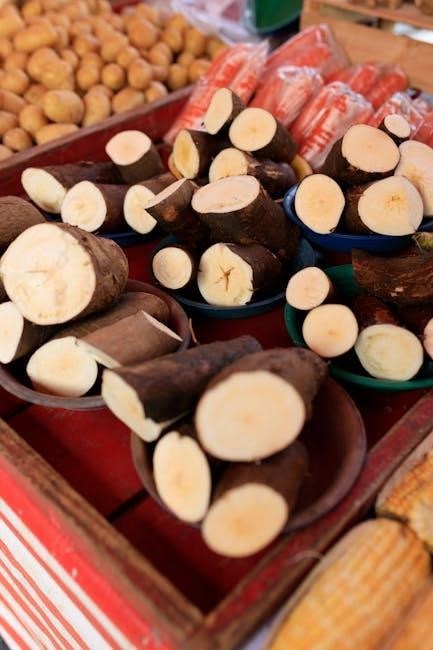
Resistant Starch and FODMAPs
FODMAP Content in Legumes
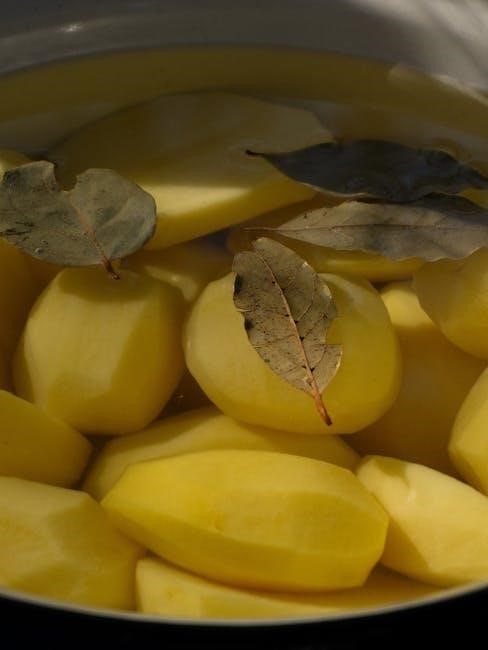
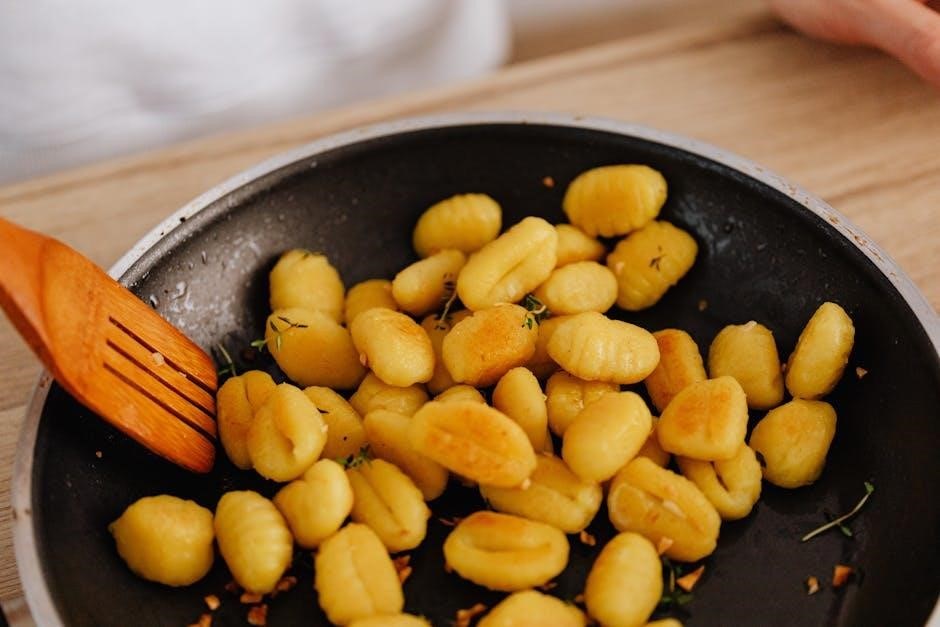
Managing Resistant Starch Intake for IBS
Incorporating Resistant Starch into Your Diet
Meal Planning Tips
Recipes with Resistant Starch-Rich Foods
Storing and Preparing Resistant Starch Foods
Downloadable Resistant Starch Foods List PDF
Structure of the PDF Guide
Benefits of Using a PDF Format
